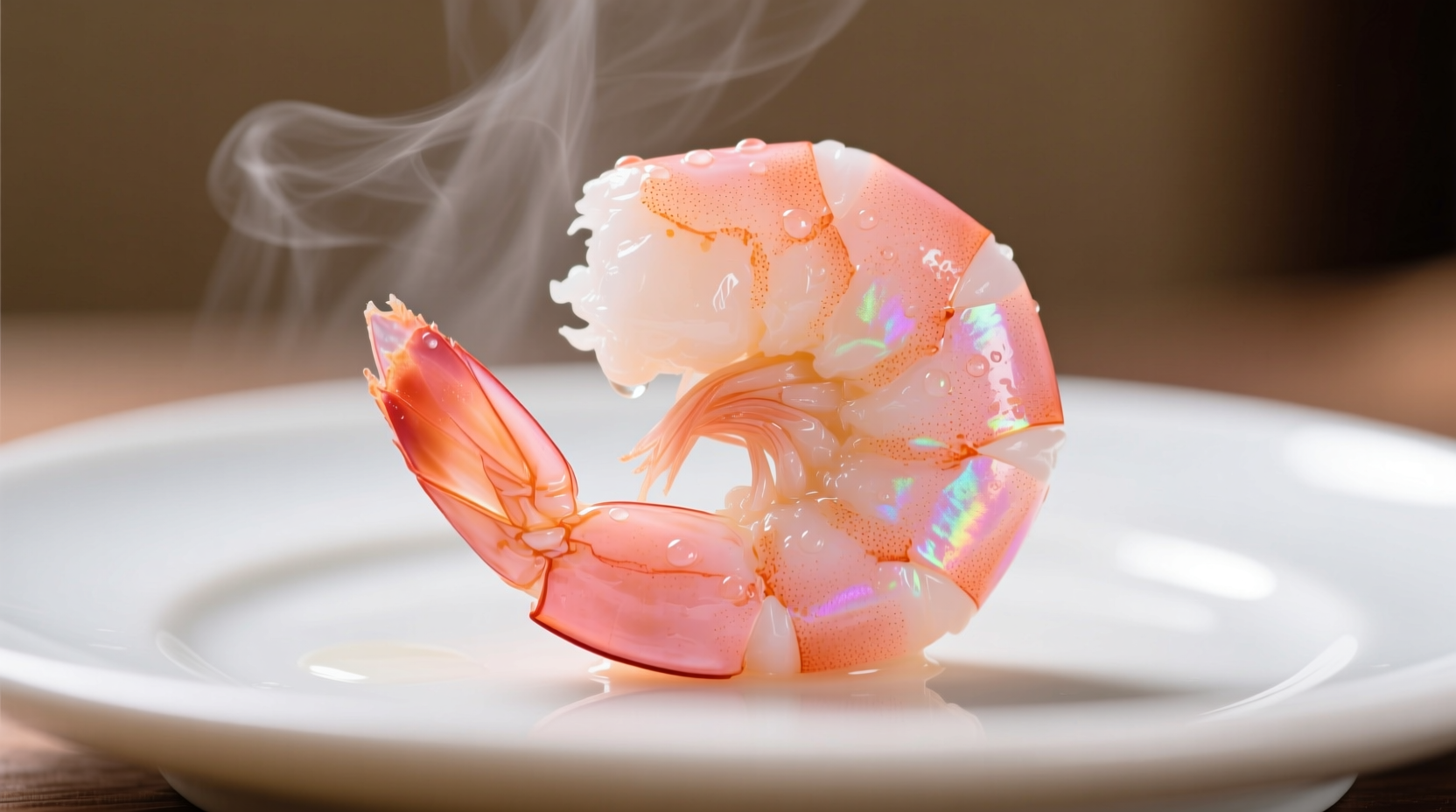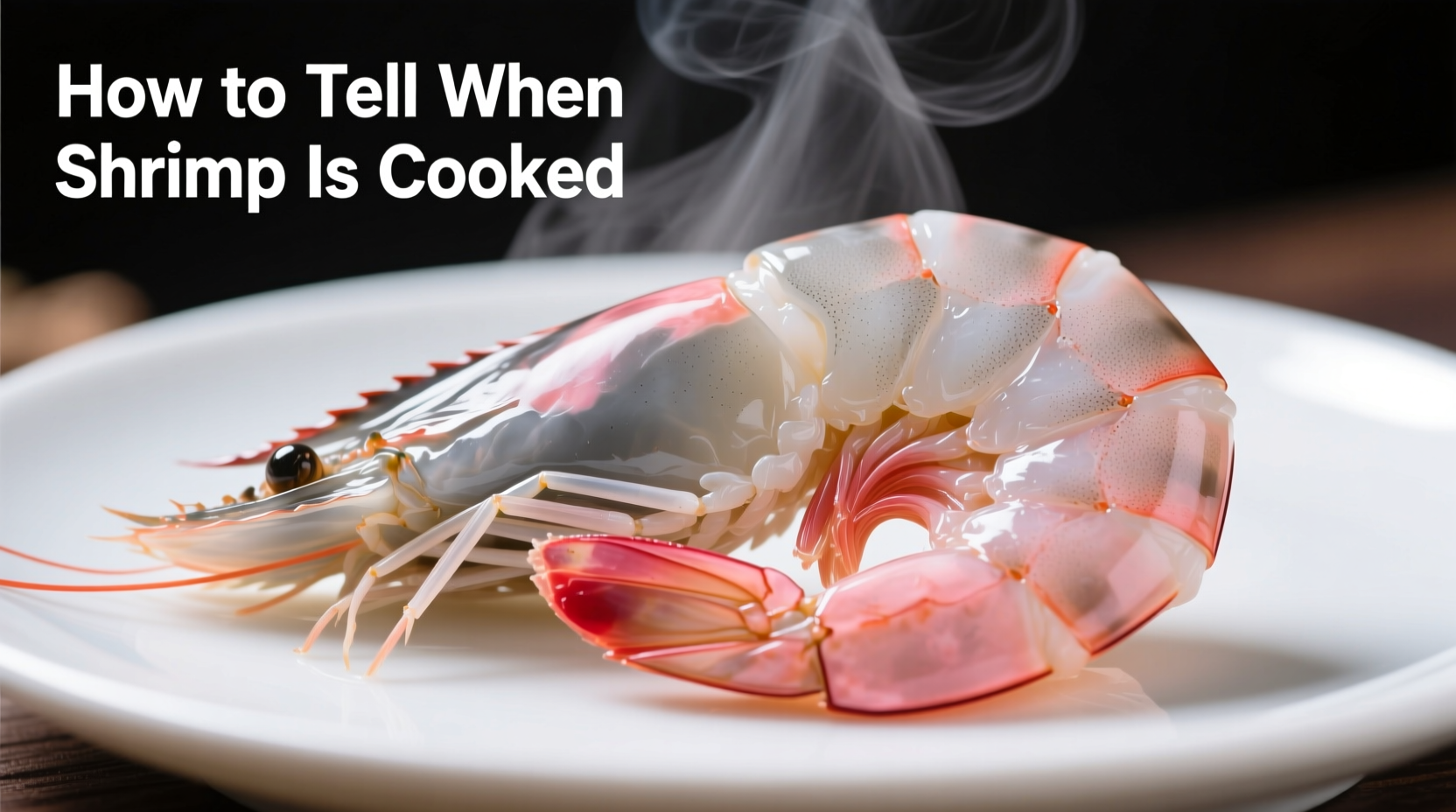Shrimp is perfectly cooked when it turns opaque pink with a slight orange hue, forms a loose 'C' shape, reaches an internal temperature of 120°F (49°C), and feels firm but slightly springy to the touch. Undercooked shrimp remains translucent gray and feels soft, while overcooked shrimp becomes tough, rubbery, and tightly curled into an 'O' shape.
Knowing exactly how can you tell when shrimp is cooked separates a restaurant-quality dish from a disappointing meal. As a chef with years of experience, I've seen countless home cooks struggle with this simple but crucial step. Get it right, and you'll enjoy tender, flavorful shrimp every time. Get it wrong, and you'll face either food safety risks or rubbery, overcooked seafood.
Visual Color Transformation: Your First Indicator
The most reliable visual cue for perfectly cooked shrimp is its dramatic color change. Raw shrimp appear translucent gray or bluish-gray, but as they cook, they transform through distinct stages:
| Cooking Stage | Color Appearance | Texture Feel |
|---|---|---|
| Raw | Translucent gray/blue | Soft, jelly-like |
| 30 seconds in | Gray with pink edges | Firming slightly |
| Perfectly cooked | Opaque pink with orange hue | Firm but springy |
| Overcooked | Bright white, possibly yellowed | Tough, rubbery |
This color transformation occurs because heat denatures the protein tropomyosin in shrimp, releasing the pigment astaxanthin which gives cooked shrimp their characteristic pink color. According to the FDA Food Code, this visual change correlates with the point where harmful bacteria are eliminated.

Shape Formation: The C vs. O Test
Watch how your shrimp curls as it cooks—this simple observation reveals its doneness. As shrimp cook, the muscle fibers contract, causing them to curl. The shape they form tells you everything:
- Loose 'C' shape: Perfectly cooked shrimp will curl into a relaxed 'C' shape. This indicates optimal texture—tender with just the right amount of firmness.
- Tight 'O' shape: When shrimp curl tightly into an 'O', they're significantly overcooked. The muscle fibers have contracted too much, squeezing out moisture and creating that unpleasant rubbery texture.
This physical transformation happens because the protein fibers in shrimp contract perpendicular to the spine as they cook. The tighter the curl, the more the fibers have contracted—and the tougher your shrimp will be.
Temperature Verification: The Scientific Approach
For absolute precision, use an instant-read thermometer. The USDA Food Safety and Inspection Service confirms that shrimp reaches safe eating temperature at 120°F (49°C), significantly lower than most proteins.
Insert the thermometer into the thickest part of the shrimp, avoiding the tail. Here's what the numbers mean:
- 110°F (43°C): Shrimp is still undercooked—translucent in center
- 115-120°F (46-49°C): Perfect doneness—opaque throughout with slight translucency in very center
- 130°F+ (54°C+): Overcooked—completely opaque, beginning to toughen
Unlike chicken or pork, shrimp continues cooking from residual heat after removal from the pan—a phenomenon called carryover cooking. Always remove shrimp from heat when it reaches 115°F (46°C), as it will continue to cook to 120°F (49°C) during resting.
Cooking Time Guidelines by Method
While visual and temperature indicators are most reliable, these timing guidelines provide helpful reference points. Remember that size matters—jumbo shrimp take longer than small ones.
| Cooking Method | Medium Shrimp (31-40 count) | Jumbo Shrimp (16-20 count) |
|---|---|---|
| Sautéing/Pan-frying | 1.5-2 minutes per side | 2.5-3 minutes per side |
| Grilling | 2-2.5 minutes per side | 3-4 minutes per side |
| Boiling | 2 minutes | 3 minutes |
| Baking | 6-8 minutes at 400°F | 10-12 minutes at 400°F |
These times assume preheated cooking surfaces and shrimp at refrigerator temperature (40°F or below). Frozen shrimp will take approximately 50% longer to cook. Always check for visual cues rather than relying solely on timing.
Avoiding Common Shrimp Cooking Mistakes
Even experienced cooks make these critical errors when preparing shrimp:
- Overcrowding the pan: Causes steaming instead of searing, leading to uneven cooking and rubbery texture
- Not drying shrimp properly: Excess moisture prevents proper browning and creates steam
- Using high heat throughout: Start high for searing, then reduce heat to finish cooking gently
- Peeling before cooking: Shrimp shells protect against overcooking and add flavor
- Ignoring carryover cooking: Remove shrimp from heat just before they reach perfect doneness
Professional chefs recommend the 'touch test' for perfect shrimp: gently press cooked shrimp with your finger. Properly cooked shrimp should feel firm but yield slightly, similar to the fleshy part of your palm below your thumb when your hand is relaxed. Overcooked shrimp will feel hard and unyielding.
Food Safety Considerations
Undercooked shrimp pose serious health risks. Raw shrimp may contain Vibrio bacteria, which the Centers for Disease Control identifies as causing approximately 80,000 illnesses annually in the United States. Proper cooking eliminates these pathogens.
Shrimp should never remain translucent after cooking. If you see gray or blue areas after the recommended cooking time, continue cooking until fully opaque. Remember that shrimp continues cooking off-heat, so remove them from the pan when they're 90% done.
Perfect Shrimp Every Time: Pro Tips
Implement these professional techniques for consistently perfect shrimp:
- Brine for better texture: Soak shrimp in 1 tablespoon salt and 1 teaspoon baking soda per quart of water for 15-30 minutes before cooking
- Pat dry thoroughly: Remove excess moisture with paper towels for better searing
- Season after cooking: Salt draws out moisture—season shrimp after they're cooked for best texture
- Rest before serving: Let shrimp rest 2-3 minutes after cooking to allow juices to redistribute
- Use a timer: Set multiple timers for different stages of cooking to prevent overcooking
When entertaining, cook shrimp in small batches to maintain consistent heat and prevent overcrowding. For large gatherings, cook shrimp to just underdone, then finish them in a warm oven while you prepare other components of your meal.











 浙公网安备
33010002000092号
浙公网安备
33010002000092号 浙B2-20120091-4
浙B2-20120091-4